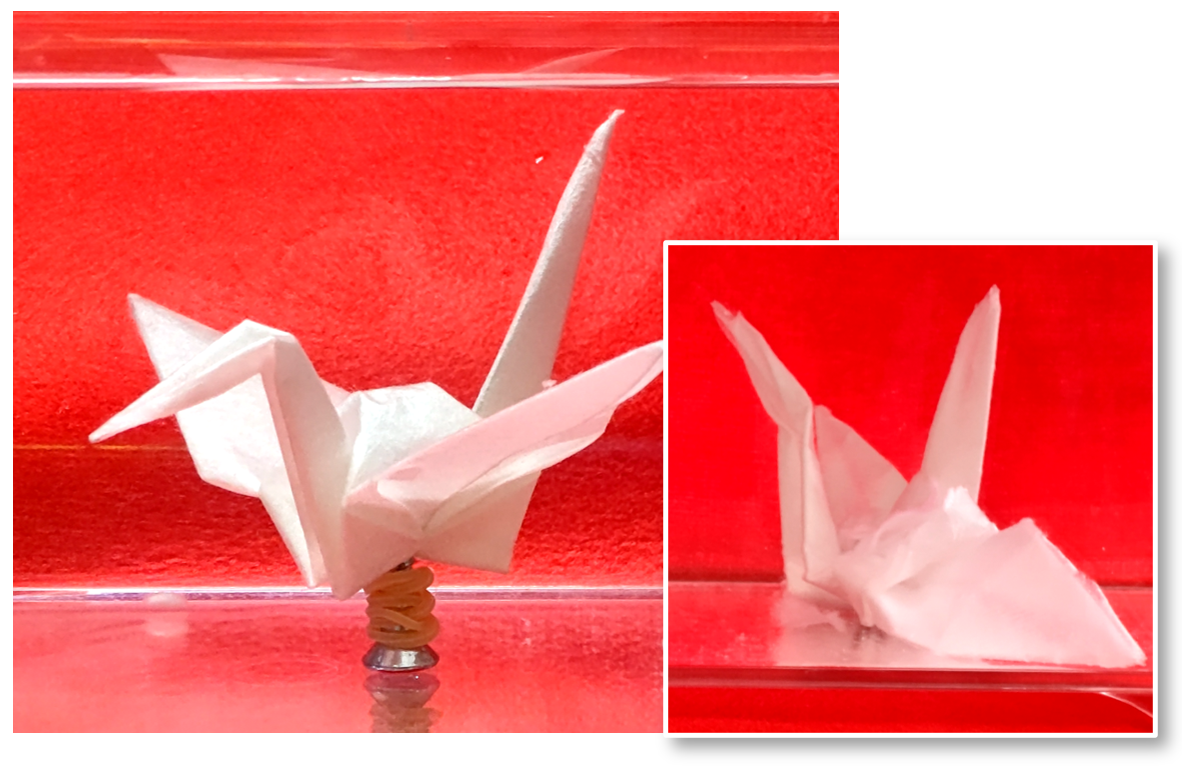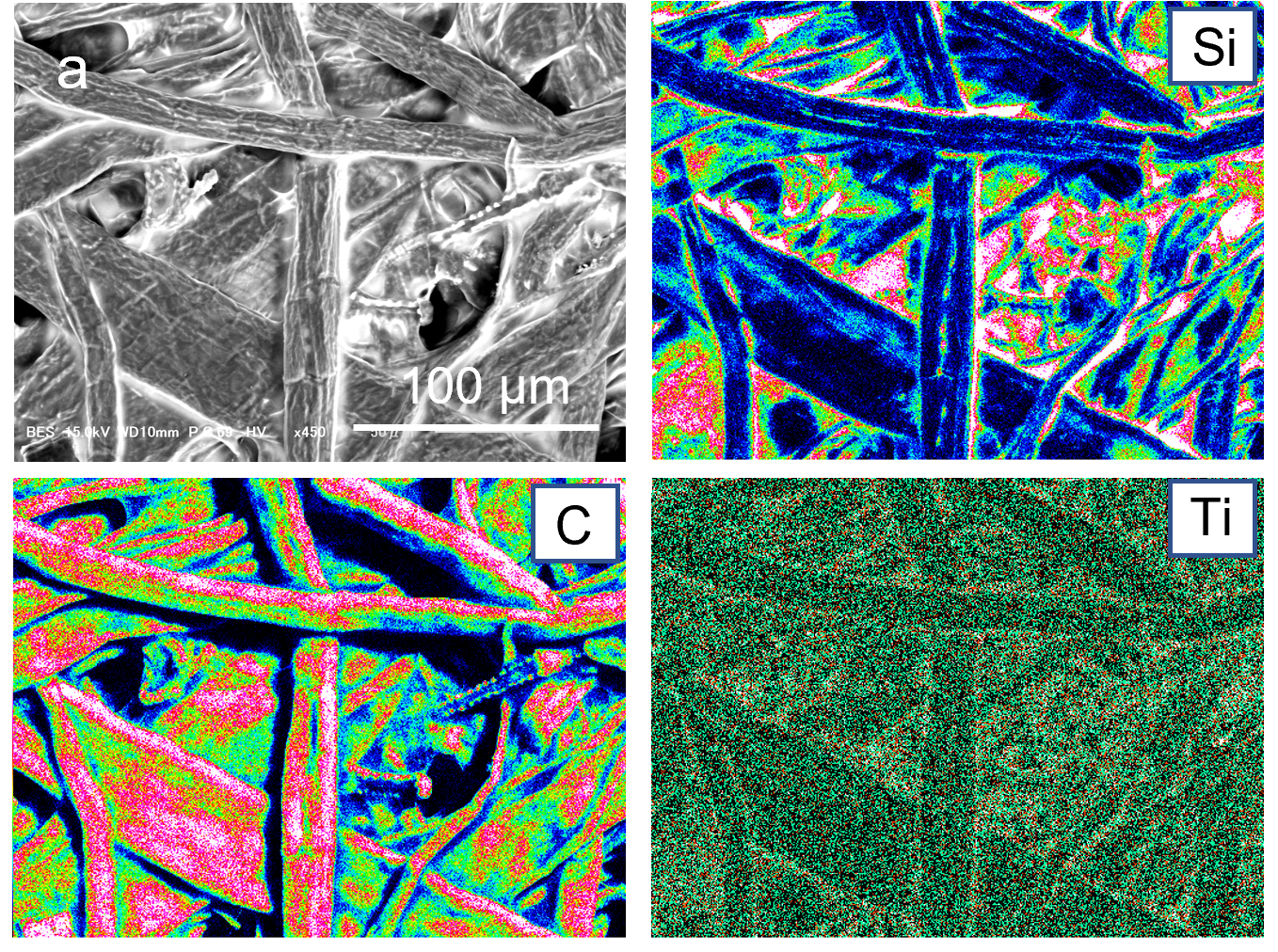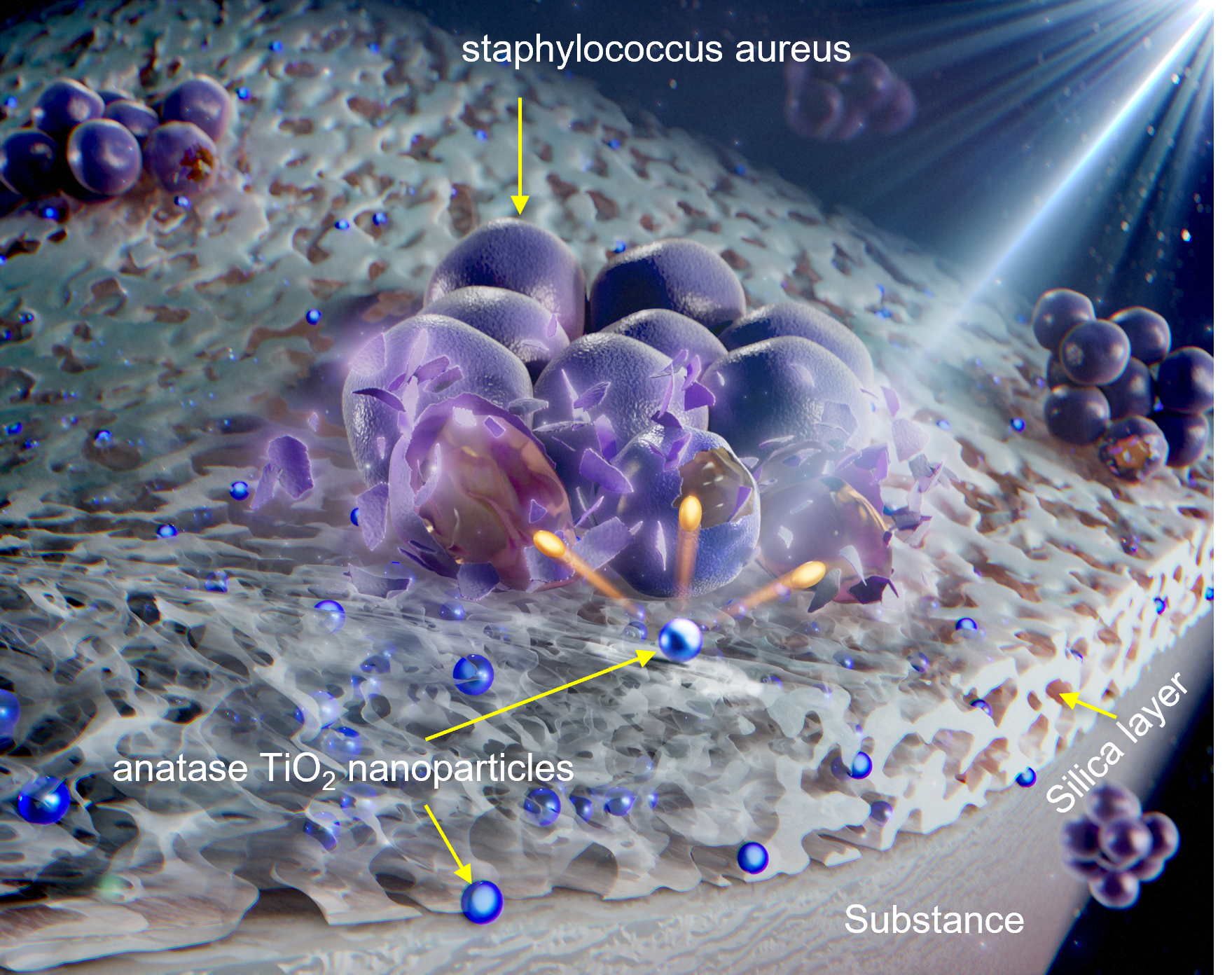
Choetsu crane. A classic origami crane made from paper and coated with Choetsu (left) and uncoated (right). When submerged in water, the coated paper crane keeps its shape while the uncoated one quickly saturates with water and starts to disintegrate. ©2022 Hiroi et al.
For our sake and the environment, there is a considerable amount of research into the reduction of plastic for many and various applications. For the first time, researchers have found a way to imbue relatively sustainable paper materials with some of the useful properties of plastic. This can be done easily, cost effectively, and efficiently. A coating called Choetsu not only waterproofs paper, but also maintains its flexibility and degrades safely as well.
It’s hard to escape the fact that plastic materials are by and large detrimental to the environment. You’ve probably seen images of plastic pollution washing up on beaches, spoiling rivers and killing countless animals. Yet the problem often seems completely out of our hands given the ubiquity of plastic materials in everyday life. Professor Zenji Hiroi from the Institute for Solid State Physics at the University of Tokyo and his team explore ways materials science can help, and their recent discovery aims to replace some uses of plastic with something more sustainable: Paper.

Choetsu under the microscope. A section of Choetsu-coated paper a fraction of a millimeter across viewed with different kinds of X-rays to see the distribution of compounds. Si is silicon, C is carbon and Ti is titanium. ©2022 Hiroi et al.
“The main problem with plastic materials as I see it is their inability to degrade quickly and safely,” said Hiroi. “There are materials that can degrade safely, such as paper, but obviously paper cannot fulfill the vast range of uses plastic can. However, we’ve found a way to give paper some of the nice properties of plastic, but with none of the detriments. We call it Choetsu, a low-cost biodegradable coating that adds waterproofing and strength to simple paper.”
Choetsu is a combination of materials which, when applied to paper, spontaneously generate a strong and waterproof film when it makes contact with moisture in the air. The coating consists of safe and low-cost chemicals, mostly methyltrimethoxysilane, some isopropyl alcohol, and a small amount of tetraisopropyl titanate. Paper structures, for example food containers, are sprayed with or dipped into this liquid mixture and are dried at room temperature. Once dry, a thin layer of silica containing methyl, a type of alcohol, forms on the cellulose making up the paper, providing the strong and waterproof properties.

Choetsu up close. A rendering showing the silica layer applied to a substance, not limited to paper, and titanium nanoparticles spread throughout. These can provide an antimicrobial effect as illustrated by the bacteria being destroyed in the center. ©2022 Hiroi et al.
Furthermore, reactions that take place during the coating procedure automatically creates a layer of titanium dioxide nanoparticles. These give rise to a dirt- and bacterial-repellent property known as photocatalytic activity, which protects the coated item for an extended period of time. All of the chemicals involved in the coating break down over time into harmless things such as carbon, water and sandlike silicon.
“The technical challenge is complete, and some applications could be realized soon, such as items for consuming, packaging or storing food,” said Hiroi. “We now hope to use this approach on other kinds of materials as well. The liquid composition can be tuned for other materials, and we can create a dirt- and mold-resistant coating that could form onto glass, ceramics and even other plastics to extend their usefulness. Alongside researcher Yoko Iwamiya, who has been working in this field for some time now, and the rest of my team, I hope we can do something truly beneficial for the world.”








